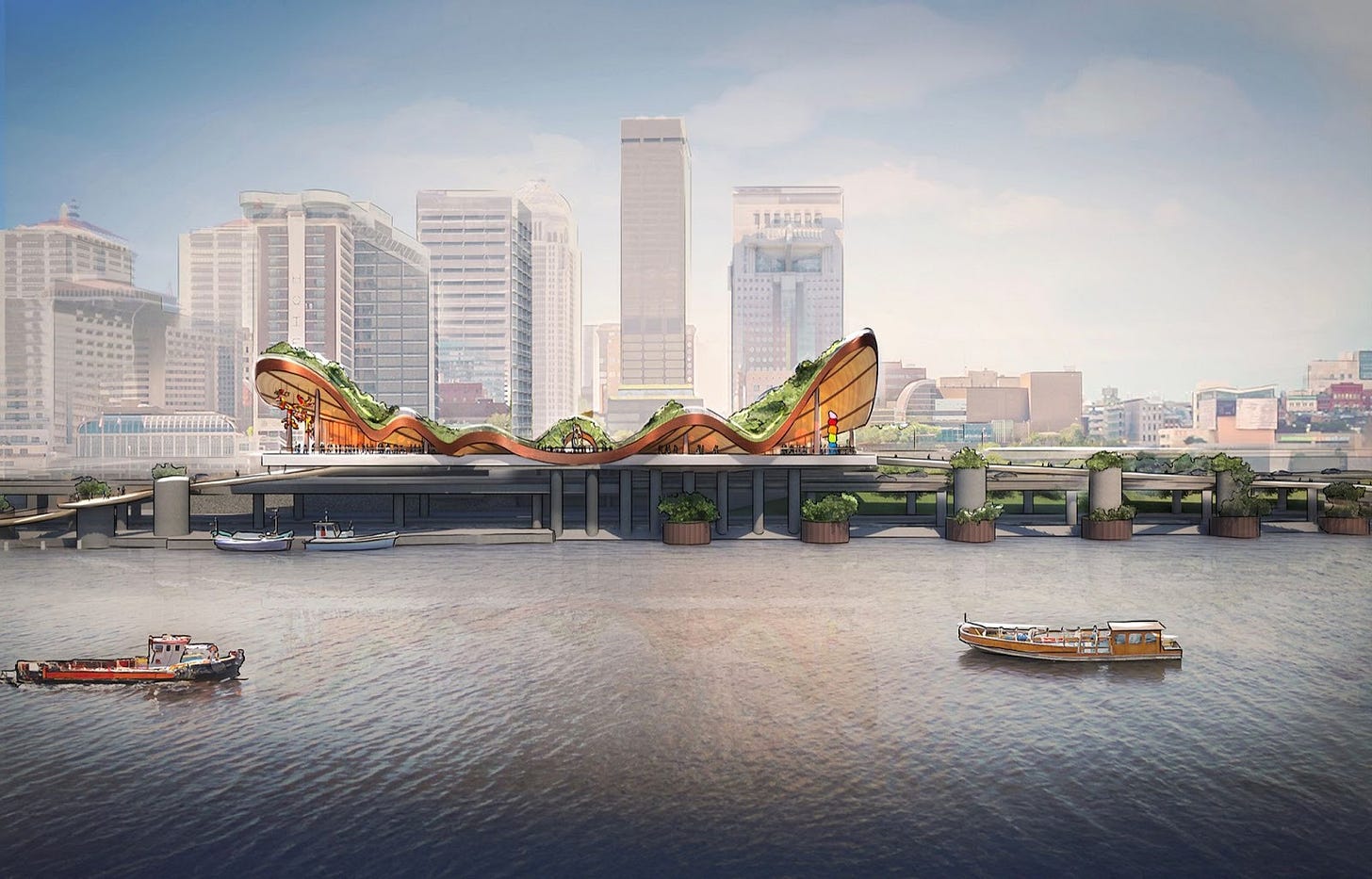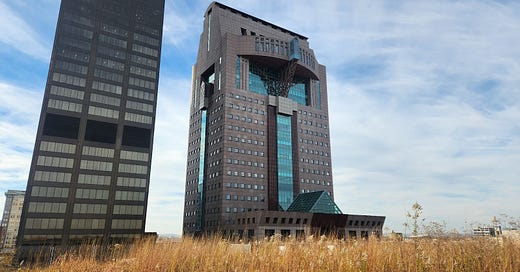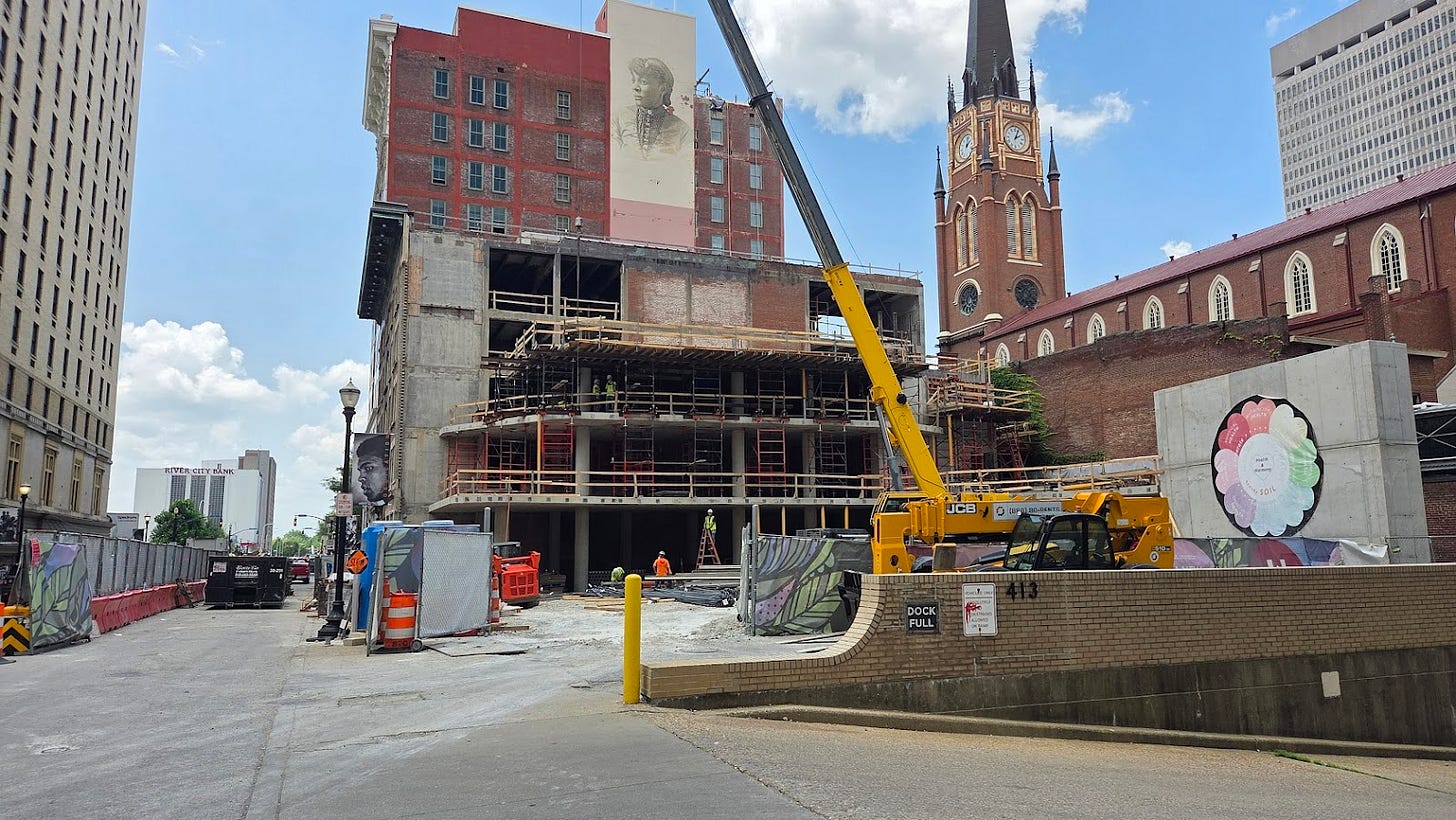You should be optimistic about downtown.
New developments paint a pretty picture for the future.
Downtown Louisville has faced a plethora of issues in the past decade. COVID and work from home has driven away much of the daytime population, leading to the vacancy of many-a-office-buildings. Our peer cities have outpaced us dramatically in office-residential conversions. Many suburban folk are still paranoid about Downtown following the 2020 protests. For many, there simply is not a reason to go downtown outside of the occasional event.
This looks like it is about to change, though. New development projects seem to be announced on a weekly basis, often with a focus on residential or hospitality. Metro is putting in a ton of work on new parks, street redesigns, and infrastructure upgrades that seem to be putting downtown on a path away from car-centrism. Downtown has long been a playground for commuters, but a significant amount of steps are being taken to make it into an actual neighborhood.
Downtown on the up
There are plenty of catalytic developments down the pipeline for downtown, enough to where I am probably going to miss quite a few. The most pivotal are the residential developments, as residential density has been vital in the revitalization of other downtowns, it even helps bring office workers back. As residential population increases, it will help to reorient downtown away from dangerous, car-centric infrastructure needed to support its overreliance on commuters. This also creates the financial base needed to support needed amenities such as grocery stores, gyms, and third places.
One of the primary ways downtown is beginning to bring in residents is with office-to-residential conversions. While it will be a long time before we catch up to cities like Cincinnati, we are beginning to put up a fight. The mayor recently announced the Fiscal Court Building would be the first to be converted to residential utilizing a new building conversion fund. The Starks Building is one the largest historic buildings downtown as is currently slated to become one of its largest apartment buildings. Other large properties still sit vacant with potential, but with the city reorienting towards residential, they may soon be home to new apartments. This includes structures like the Heyburn Building, Home Life Building, Landmark Building, and 500 W Broadway.
Completely new developments will also be filling the urban core’s missing teeth in the coming years. Local firm LDG has been buying up a significant amount of property for new residential and mixed-use projects. They recently released renderings for their 300+ unit complex at the former Brown Bros Cadillac site and have plans for more at the former Greyhound site. Metro has also given away some city-owned lots to be developed into mixed-use projects, including an entire city block in Mud Lot that can hold hundreds of new homes. Beecher Terrace on Ninth Street also continues to add units with its fourth phase of construction soon to be complete.
While residential is pivotal to a successful downtown, new businesses and educational facilities usually don’t hurt, and a lot of those are in active construction with many more planned. JCTC is currently in the midst of basically overhauling an entire city block, building a new green space, science building, and mixed-use parking structure. The intersection of 5th and Ali is home to a flurry of activity as the Envirome Institute’s new campus is beginning to take shape across from their recently completed Trager MicroForest. Right across the street from that, the Louisville Gardens is also beginning to be converted into a massive sound-stage for video production.
While many Louisvillians (understandably) are not fond of hotel development, a lot of that came from the fact that they were kind of the only game in town for a while. Now they are one among many, and still likely a net-positive for downtown. Zyyo’s Hotel Bourre Bonne was recently completed at 2nd and Market and sits right across from Zyyo’s next hotel project, which may be Louisville’s next skyscraper at 27 stories. Another addition to Louisville’s skyline may take place on Main Street with Poe Company currently planning a 1000+ room convention center hotel at the former Museum Plaza site next to the Muhammad Ali Center. These are only some of the big projects, there are also a variety of smaller hotels in the works such as at the corner of 5th and Market.
Outside of the private (and private-ish) development projects. The city is putting a large amount of resources into public projects that will likely have a transformative effect on downtown. The Belvedere will soon have a solarpunk-looking UFO land on it, which will probably make it quite the attraction and create an iconic centerpiece for the Louisville skyline. Metro is currently in the process of quite a few roadway redesigns that will make mobility across downtown, especially for non-car users, quite nicer. East Market Street will soon finally be complete, linking downtown to NuLu with a protected bike lane. This project will go hand-in-hand with Main Remade which will seemingly entail a similar redesign of Main Street, although it will go much further than NuLu. The whole downtown network will also be reconfigured, with most one-ways becoming two-ways along with potentially some new bike lanes (both protected and unprotected). The two-way conversions alone will be a massive safety upgrade, slowing down drivers and potentially even increasing business activity. More long-range redesigns are occurring with major roadways such as Ninth Street and Broadway.

Look towards the periphery
While I am the type of nerd who gets mad whenever anything beyond Ninth, I-65, and Broadway is called downtown, the truth is that the neighborhoods along the rim of downtown are considered part of downtown by many and their success will probably only help downtown. NuLu, Portland, Russell, SoBro, LOUMED, Phoenix Hill, and Butchertown are all seeing more construction activity than past years.
Looking towards the west, Portland will soon be home to the western portion of Waterfront Park. Phase 1 of this expansion has already been completed, with the Play Port playground opening earlier this year. This will be connected to downtown with an expansion of River Road, hopefully creating a more integrated waterfront. Nearby Painters Row recently opened, a large residential conversion project on 15th Street. Russell is also seeing a lot of positive change, although it is pretty far away from downtown. The west end’s first hospital in over a century just opened right across from the new Goodwill Opportunity Campus, creating a center of vital amenities for the neighborhood and beyond. Nearby, a massive new apartment complex, The Eclipse, will soon be opening along with the recently opened Alberta O Jones Park; the park will also continue to expand in the coming years.
Looking east, Louisville’s medical-educational district (LOUMED) is going through its own array of changes. Chestnut Street will soon be redesigned to be a healthy, multi-modal corridor with a new park space at its center. New hospital buildings also continue to rise with a new UofL tower nearing completion, with plans for a $280 million dollar nursing and simulation center being made as well. New residences are about to complete construction nearby; The Prestonian will soon be opening with over 300 units.
NuLu continues being NuLu with its insane amount of development activity. “The Yard” has been seeing substantial completion, a development project with a hotel, food hall, offices, apartments, and family scholar house is now (mostly) open to the public; the food hall should be opening in the coming months. Zyyo has a laundry list of developments planned, too many to mention. Among them is NuLu Crossing, which will feature hundreds of apartments and potentially even a grocery store. Butchertown’s Sports Entertainment District around the soccer stadium is also finally seeing its first development with a mixed-use project planned by LDG and Denton-Floyd.
A grain of salt
With all things like this, a dash of the typical North American urbanist cynicism is needed. Some of these projects are simply not going to happen for one reason or another. Projects like the redesign of Broadway rely on federal funding that may not be there in the coming years as Sean Duffy’s DOT is actively hostile to anything multi-modal. Metro Government may also fail to follow through on some of these projects; the city has quite a few downtown two-way conversion plans sitting on a dusty shelf. There are plenty of reasons to have a healthy skepticism.
Despite all that, I am still genuinely optimistic for downtown for the first time in my life. It is hard to move about downtown without running into one construction project or another. I also often find myself encountering those little urban quirks that I haven’t seen much before in our city: street performers, food vendors, random events taking over streets, folks lounging around outside, and so on. It feels so much more alive, and there is much more to come.






